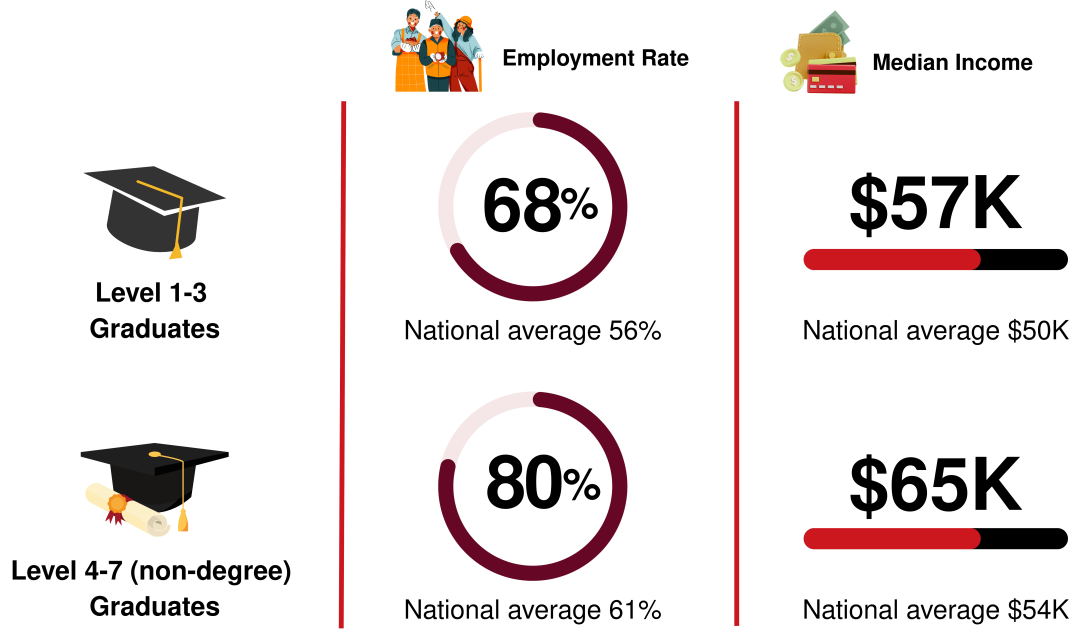Post-Study Outcomes Study
The Post-Study Outcomes1 research study provides valuable insights into how graduates fare after completing their qualifications. It tracks outcomes including employment trends, further study, and income progression across different qualification levels over time2.
We looked into how graduates with food and fibre-related qualifications—those in Agriculture, Horticulture, Forestry, and Environmental Studies3 — compared to graduates in other fields of study, and to uncover the key trends shaping the careers of graduates and the nature of the workforce within our sector.
The results were clear: food and fibre certificate and diploma graduates consistently perform well, and in some areas, they lead the pack. Standout findings for food and fibre graduates include:
Food and fibre grads outperform national averages
Graduates with Agriculture, Environmental, and Related Studies qualifications consistently ranked among the top three fields, and above the national average for employment rates (i.e. percent in employment) and income (i.e. median income) , especially for young graduates—showing that the food and fibre sector provides good career opportunities.
Young graduates (<25) had higher employment rates and median income in their first year after graduation compared to the national average

More skills, more pay
Graduates with higher level certificates and diplomas (Level 4-7) generally earned more than those with entry-level qualifications (Level 1-3), and those with degrees had even higher incomes—showing the value of higher study in the food and fibre sector.
Higher median incomes for young (<25) graduates with level 4-7 (non-degree) qualifications
Fast starts and real growth
Young graduates (<25) not only had high employment rates from the start but saw the biggest income gains over time - showing that entry-level food and fibre qualifications can deliver long-term value for young workers.
Forestry tops the charts
Forestry graduates stood out across the board with the highest employment rates and median incomes - proving the strength of hands-on, non-degree qualifications in this field for graduates of all ages.
These insights help us better understand how food and fibre qualifications translate into real-world outcomes and can inform decisions by learners, educators, and employers alike. You can explore in more detail the outcomes for Agriculture, Horticulture, and Forestry graduates in our technical report below.
Further information on the Post-Study Outcomes research and data is available on the Tertiary Education Commission website.
Footnotes
1. A research project by the Tertiary Education Commission (TEC) with data sourced from Stats NZ’s Integrated Data Infrastructure (ID)
2. Measures outcomes in years 1, 3, 5, 7 and 9 after graduating.
3. New Zealand Standard Classification of Education (NZSCED) three levels of study: Broad Fields, Narrow Fields and Detailed Fields